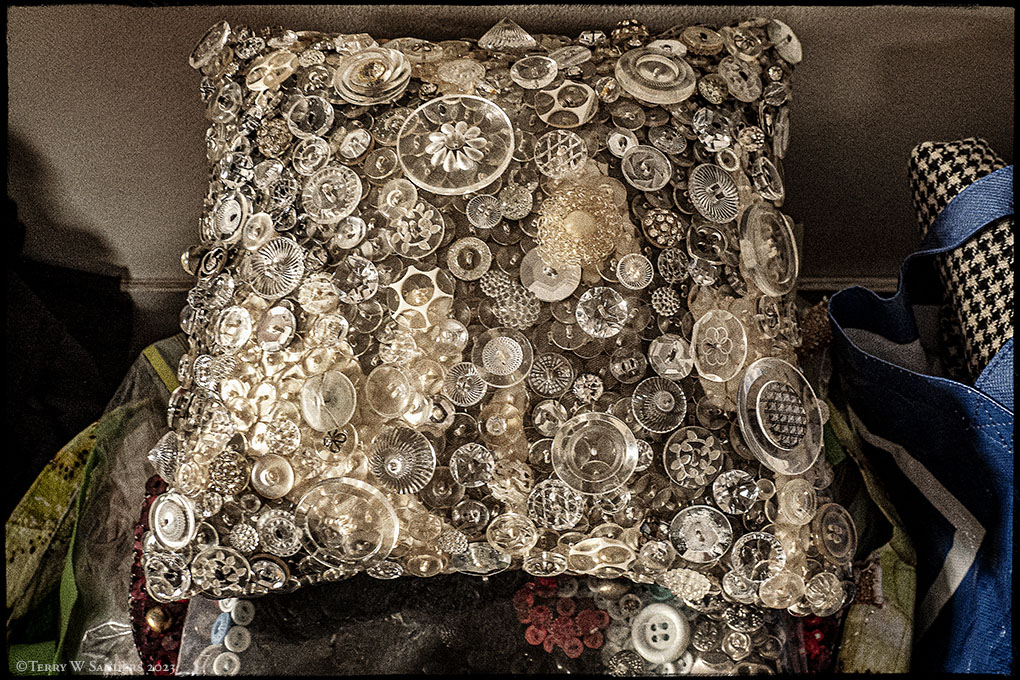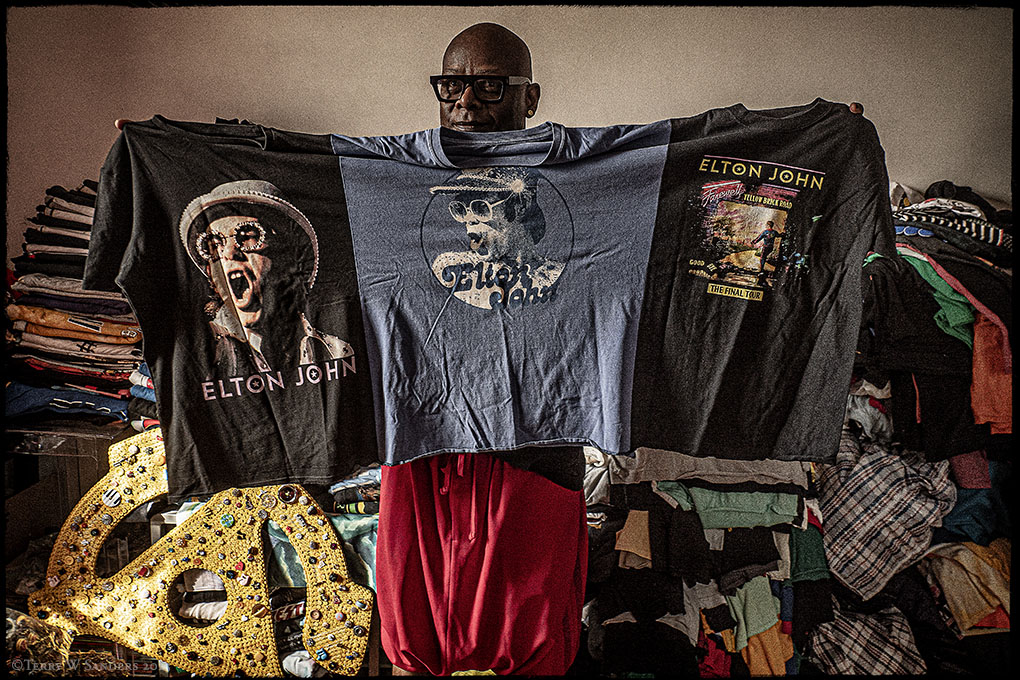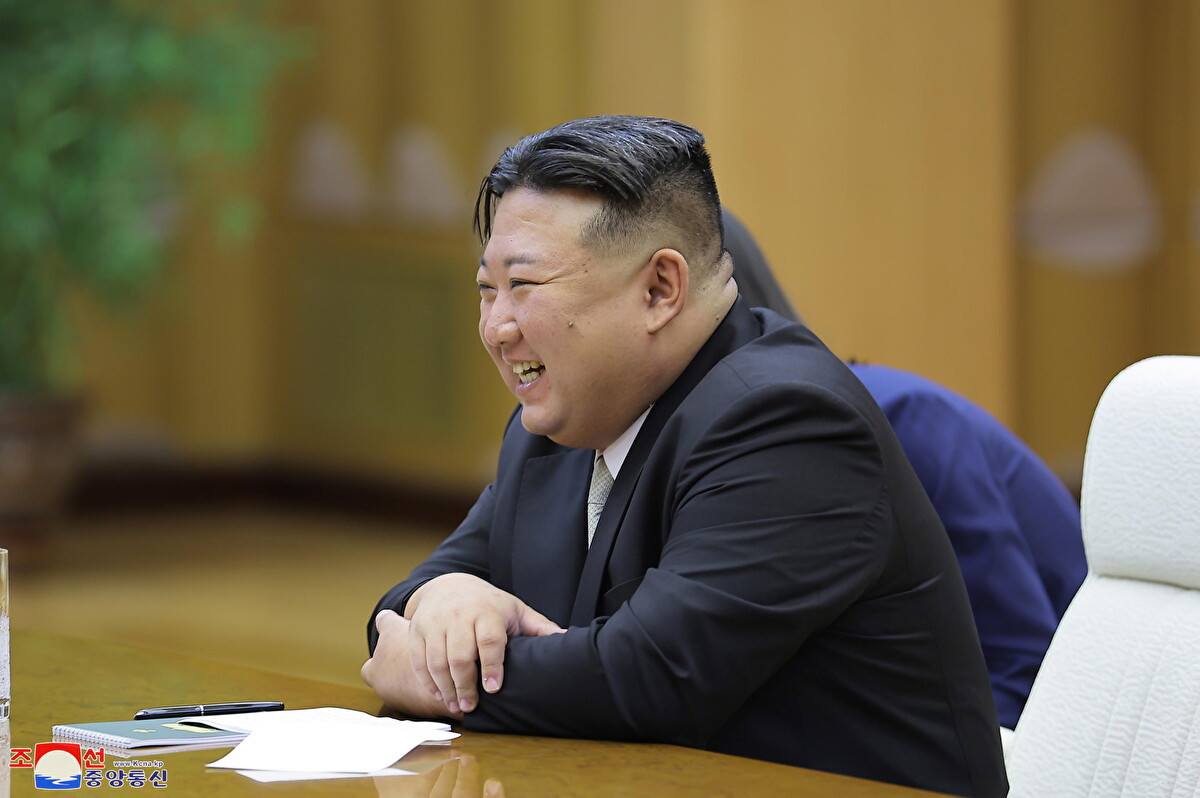Beau McCall is a cheerful gentleman from Harlem, with a winning smile and an original style. He makes garments and works by applying buttons – those for clothing to be clear – on fabrics, materials and mostly recycled objects. A passion that earned McCall the titles of “Sir Buttons” and “The Count Buttons”, in other words, the Lord Buttons. “By pure chance I fell in love with the buttons and out of necessity I dedicated myself to upcycling,” he told us in his studio in Harlem, where we discovered that behind the objects he loves lies a path made of emotions.
We found Beau working on a portrait of Billie Holiday, a piece of art – made of buttons of course – meticulously detailed, a perfect image of the singer. For almost four decades, McCall has been telling about African American life, love and experience with buttons; creating works behind which social messages and pop culture lie. “The buttons are universal. There are those that express class differences, political views, and cultural issues. What I want is for viewers to reflect on the theme of race, social class and LGBTQ+ identity when observing my creations, along with finding joy in my abstract sculptures and works.”

The canvases Beau works on aren’t just garments. Entering his studio is like exploring a universe that encompasses eras and myriad places: from distant bazaars, through vintage markets of European capitals, to New York’s antique shops. Against the walls, perfectly stacked, are hundreds of T-shirts, McCall’s latest creations, called Triple T-Shirts. Three cotton t-shirts sewn one to the other, wearable in six different ways. Each tells a story or an anecdote. One among the many features Elton John with the face of the star alongside tour dates of past concerts.

Boxes, drawers, storage rooms packed with thousands of buttons: put together, overlapping, stacked, all individually sewn on the fabric. Before the buttons, the Harlem artist revealed past passions: from roller derby to papier-mâché flowers, through macramé to punk rock, and even forming a band. “On TV I saw Blondie in concert and fell madly in love with Deborah Harry’s style, her voice, with all the energy that emanated from her. To the point where I wanted to have my own band. It was a natural consequence to involve two friends to start a group called Strange Beauties.”

A longtime New Yorker, where he launched his career as an artist, McCall was born in Down South Philadelphia, growing up in public housing. Intrigued by a jar of buttons kept in the house when he was 19, McCall, needless to say, has collected them ever since. The first person who sensed that the apparent hobby would not be a passing thing was his mother, his source of inspiration, the one who still tirelessly sources buttons for him. “I grew up with the knowledge that I could become whoever I wanted. Today the support of my family is the strength which allows my talent to shine through.”
Beau’s mother had a passion for thrift shops. At first a source of embarrassment, they become a wellspring of inspiration. “My brother and I were waiting outside the stores because we felt ashamed. One day I gathered courage, I did it more out of curiosity, and went in. That moment shaped my emergence as an artist.”

Before his art ended up in museums throughout the United States, at the end of the eighties the Lord Buttons took his first steps in fashion: a collection of unique pieces presented in a show at the Harlem Institute of Fashion (HIF) for HARLEM WEEK. Established within the HIF’s Black Fashion Museum collective, McCall’s art has entered the pages of Women’s Wear Daily, the industry’s Bible, as well as appearing in the PBS version of the play The Colored Museum.
Today the Harlem artist is hard at work with his first retrospective, Beau McCall: Buttons On! which opens March 30, 2024, and runs until February 2, 2025. The exhibition will showcase more than one hundred works at the Fuller Craft Museum in Brockton, Massachusetts. Curated by Peter “Souleo” Wright, who is also Beau McCall’s partner, the exhibition is divided into four themes: “Buttons on the Body,” “Buttons on the Mind,” “Buttons on the Soul,” and “Buttons Off.” Each will represent a different area of McCall’s creative process using buttons. It includes his archive, photographs, testimonials, and a lyrical representation of the artist.

“Buttons on the Body” spans almost forty years of fashion collections: jackets, vests, shorts, sneakers and jewelry. “Buttons on the Mind” showcases the artist’s visual artwork. Among them a cast iron bathtub wrapped entirely in fabric and buttons: “Darkmuskoilegyptiancrystals&floridawater/red potion no.1”, covered with a variety of shapes and sizes, including stars, flowers and butterflies, with red dominating. It’s an artwork with a difficult title and a harder meaning. It is inspired by the poem ‘one’ from Ntozake Shange’s choreopoem, “for colored girls who have considered suicide / when the rainbow is enuf.” The lighter buttons reveal the thin body of a woman which suggests how “the bathtub becomes a spiritual and ritualistic sanctuary and site of one’s search for inner peace and self-love. How, even if dejected, the body is always at the root of our beauty.”

“It’s the work I’m most proud of. I transported 200 kilos to the fifth floor without an elevator, but the real challenge was wrapping the tub with fabric. That’s why it was necessary to make holes, so I annoyed the neighbors for weeks, unaware that the drill tip was wrong. However, two hundred holes later, the result is an emotion that resurfaces every time I look at the piece.”
Beau’s latest offering represents music, a giant version of the old 45-rpm disc adapter. “The objects I create contain a lot of things, including sound. The mother-of-pearl buttons click. Less resonant, is the sound of plastic rubbed between two fingers. In a container you can shake many buttons made of different materials and produce a rhythm.”
Beau bid us farewell with a last affirmation: “One thing is clear, what gives me enthusiasm in life is the sight of a button.”












